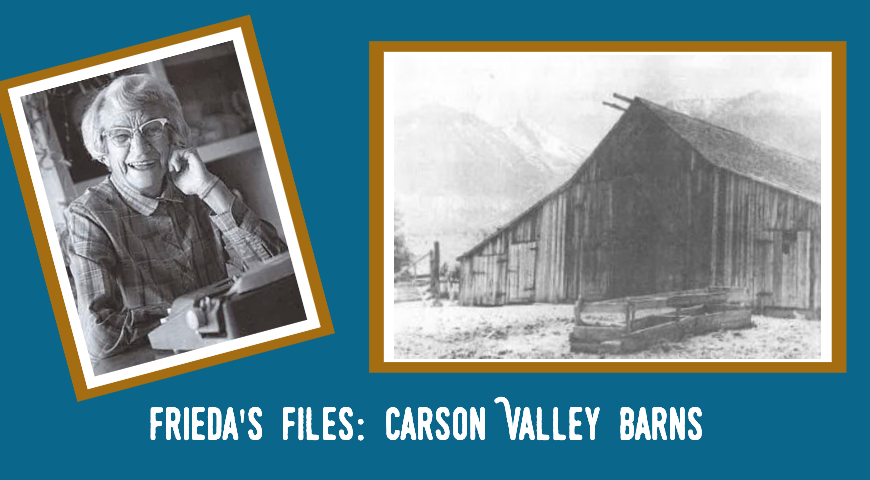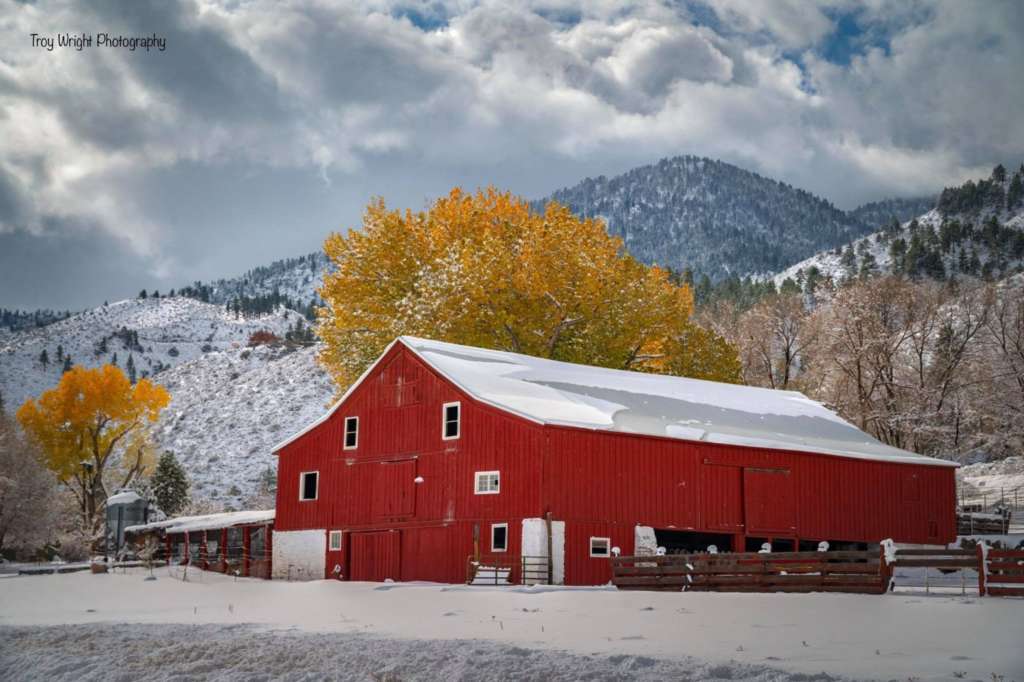Frieda’s Files are a collection of historical short stories about Carson Valley by Frieda Cordes Godecke, published in The Record-Courier. Reproduced here with permission from the Cordes Cousins, and their book “Frieda’s Files”.
June 29, 1978 Carson Valley Barns
It was a sultry summer day around 1917 or 1918. There had been rumblings of thunder and flashes of lightening in the heavens all morning. Suddenly, a bolt of fire streaked across the sky to find its mark – the big barn on the Fritz Heise ranch near Centerville.
In minutes, the barn was engulfed in flames. A dozen horses trapped in a corral surrounding the barn had no way of escape. The intense heat prevented men who were working in the fields nearby from unlatching the gate which was attached to the barn. Using axes and sledge hammers, the men chopped down a section of the fence in the far corner of the corral to free the frightened, screaming animals.
Barns such as the Heise barn dotted Carson Valley in the early days. Many of these barns have been restored and are still very much in use today.
Probably the first barn of any size in the Valley was the Hiram Mott barn building in 1855 in the foothill settlement that became known as Mottsville. Perhaps because of its size, this barn was used a year later in 1856 for a session of the United States District Court with Judge W. W. Drummond of the Third District of Utah Territory presiding. Offenses such as cattle stealing, gambling, and concubinage were taken care of in this court.
The Mott Barn stood just below the Mott Cemetery.
The Squire Mott barn which stood nearby weathered the storms until the 1950s when it was leveled to the ground by a heavy wind storm. The same wind took off the roof from Israel Jones barn which is still standing with its replaced roof where it was built so many years ago. Wooden pegs and hand wrought square nails were used in the building of these barns. Many of the nails came from the forges of Henry Van Sickle at Van Sickle Station.
Henry Van Sickle found it necessary to erect five barns on his property at the Van Sickle Station a few miles south of Genoa. He did a tremendous business in caring for the horses and mules used in freighting supplies to Placerville or northward along the Carson River Route to Carson and Virginia City. One of these barns with its rock foundation was restored by Mr. and Mrs. Fritz Rupple when they owned the property some twenty or more years ago.
One of the two barns on the August Kettenberg property was moved there by Dave Park from its location half way between Walley Hot Springs and Genoa. The other barn was built by Dave’s father Hugh Park, long before the turn of the century.
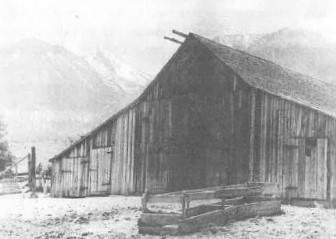
This barn, which stands, on the August Kettenberg property, was built by Hugh Park and is typical of all barns built during the past century. Photo courtesy of Juanita Schubert.
As we travel along the foothills, we pause to admire the beautiful old Ben Palmer barn near Sheridan, built by Chas. Holbrook in 1868. The Palmer family, some of whom were southern slaves at one time, acquired the property from Holbrook. They were famous for their hospitality in the community.
Next we stop to take a good look at the large barn on the Scossa ranch. It, too, weathered many a storm and is still in use as an essential part of the ranch activities.
Finally we stop to visit the Lute Olds haunted barn on the Budd Dressler property at Fairview. It was here that a miner named Sawtooth was robbed and murdered. He was buried in a potato cellar in the barn. And it was here that outlaw Sam Brown was shot and killed by Henry Van Sickle. His body also was placed in the cellar until the burial at Genoa.
Old timers tell us of nights when ghosts stalked about, heaving potatoes about the cellar.
As we look down over the Valley, we think of one large barn that was completely demolished in what was perhaps Carson Valley’s most destructive wind storm of all time. This barn stood in Minden on the lot that is now being used to park Douglas County School buses. When Minden and the V & T Railroad came into existence around 1906, this large barn was built for use as storage for hay, grain, and other farm products.
We well remember the sight that met our eyes that early morning of Feb. 12, 1923. Broken boards and bent sheets of tin were scattered for miles from the ruins of the barn at Minden as far as the Dangberg sheep camp ranch [now the corner of Buckeye Rd. and Orchard Rd.]. The barn was never rebuilt.
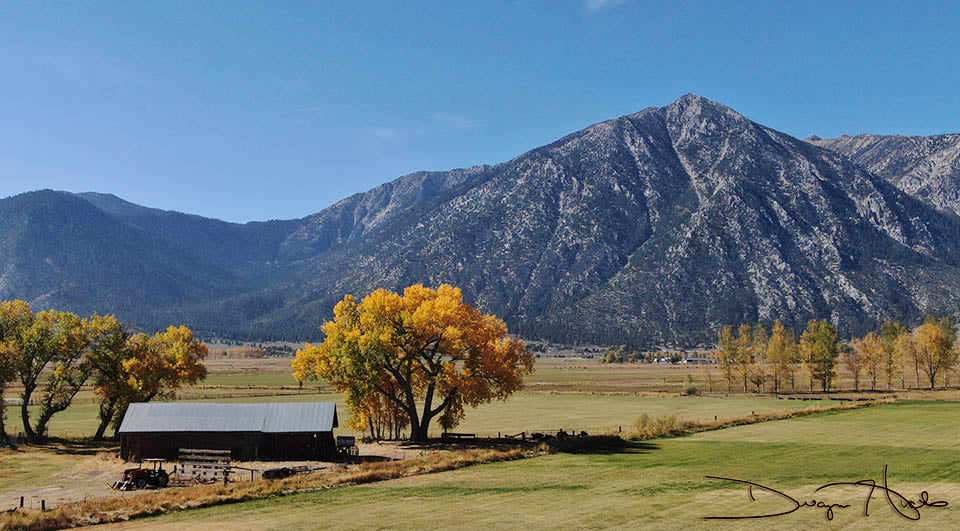
Carson Valley ranch. Photo by Dwayne Hicks, Carson Valley Tours.
Scattered over the Valley we see dozens of old barns that were built by forefathers of some of our prominent families—the Dresslers, Dangbergs, Johnsons, Rabes, Lampes, Henningsens, Settlmeyers, Neddenrieps, Campbells, Adams, Springmeyers, Stodiecks, Gansbergs, and many others. A custom, brought from their mother countries by our pioneers, was carried out to a great extent by them in Carson Valley. As far as it was possible, livestock were sheltered under a roof, especially during the stormy, winter months. Consequently, it seemed as necessary to have good barns as it did to have comfortable homes.
Using a Jackson fork, horses were used in forking hay into most barns. After the fork has passed through a large opening in the gable of the barn, it was hooked to a wheel carrier and then guided to the section of the loft where the stacker wished to dump it.
The old barns and blacksmith shops nearby were the “service stations” for horses and wagons in the past. Each team had its separate stall with a manger for oats and hay and pegs on which harnesses for that particular team were hung.
Many of the joys of childhood were centered around the big barns on the Valley farms. How pleasant it was to enter the doors and hear the contented munching of cows and horses as they enjoyed the freshly cured hay that filled the barn with its delightful aroma! What a thrill it was to climb the ladder to the hay loft and perhaps surprise a cackling hen from her hidden nest or to discover a litter of tiny kittens, warm and cozy in the soft hay.
A barn was a wonderful place for hide-and-seek. And what, in spite of mosquitos, could be more perfect than “sleeping out” a night in the loft on an old blanket or two and listening to the twittering of the swallows safe and secure in their mud houses in the rafters above?
Today these beautiful old barns stand majestically as memorials to our hard-working ancestors and their contribution to the future of Carson Valley.
